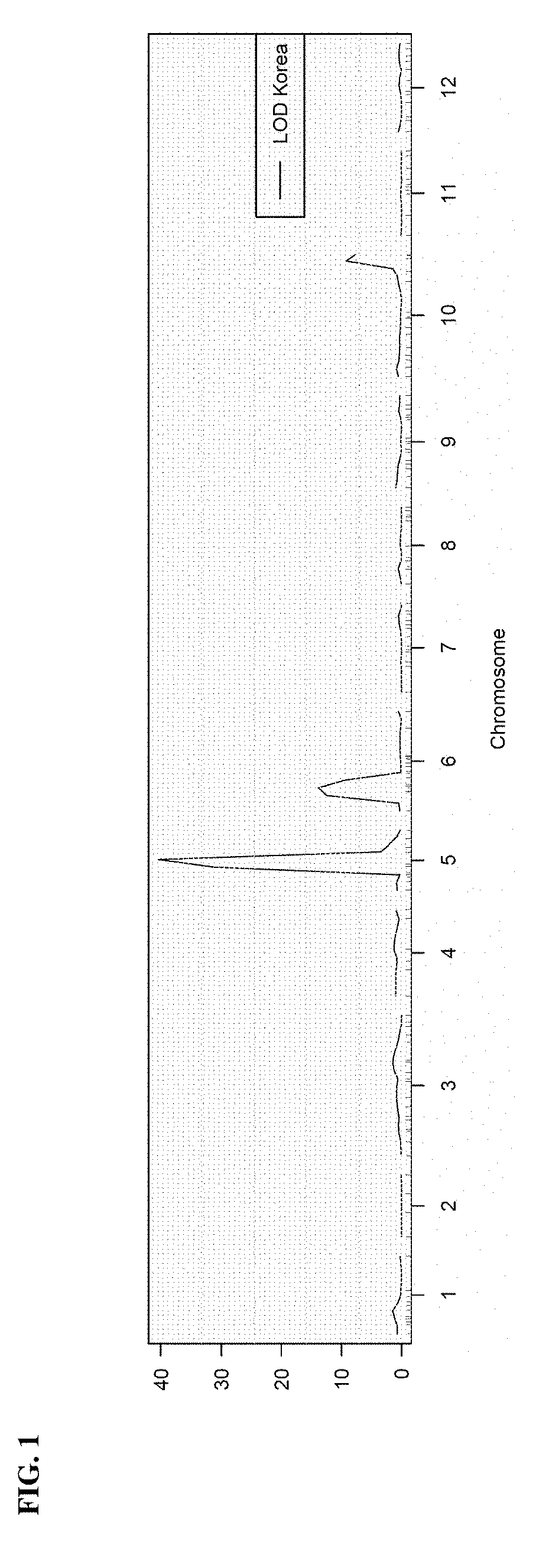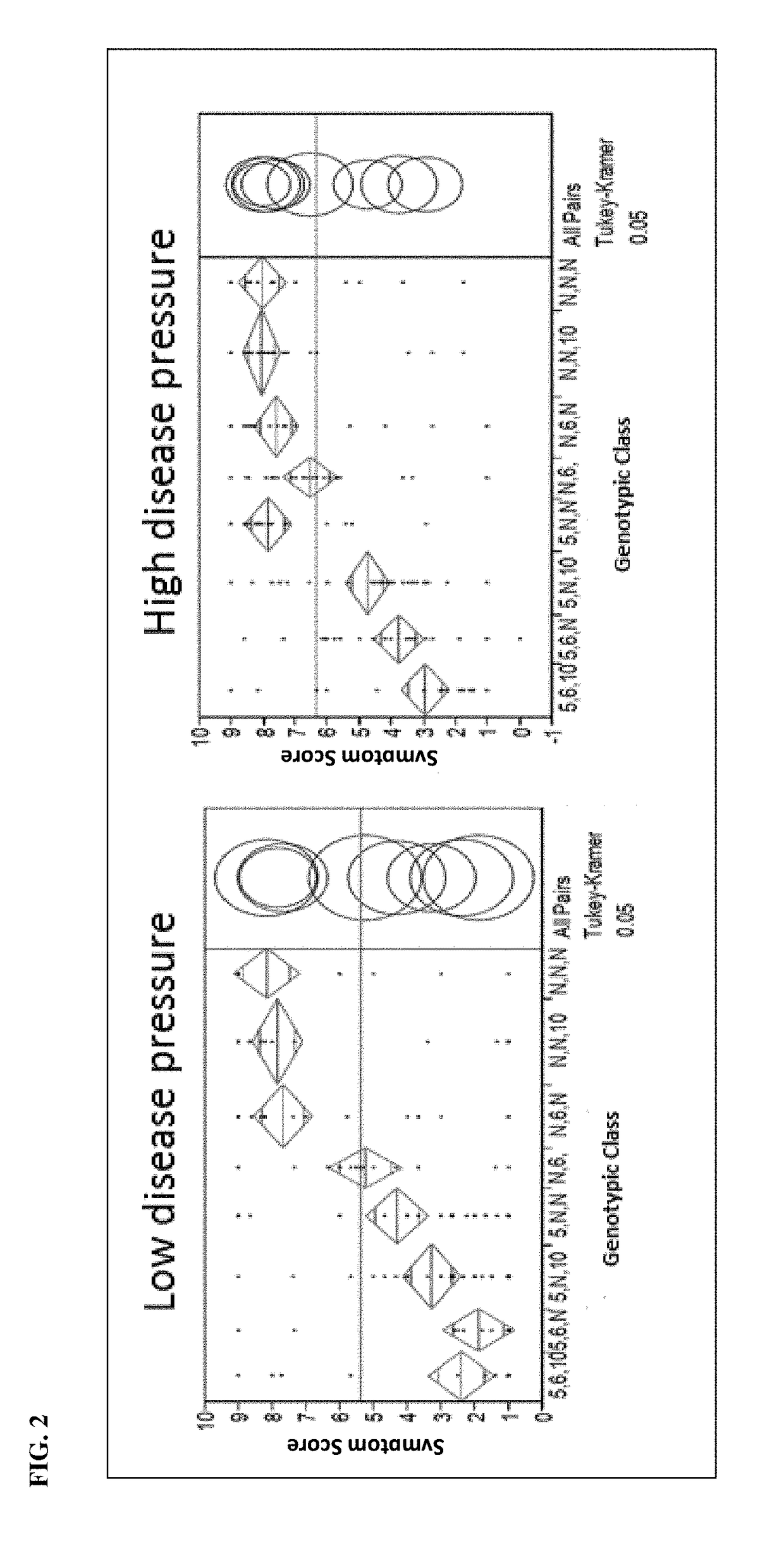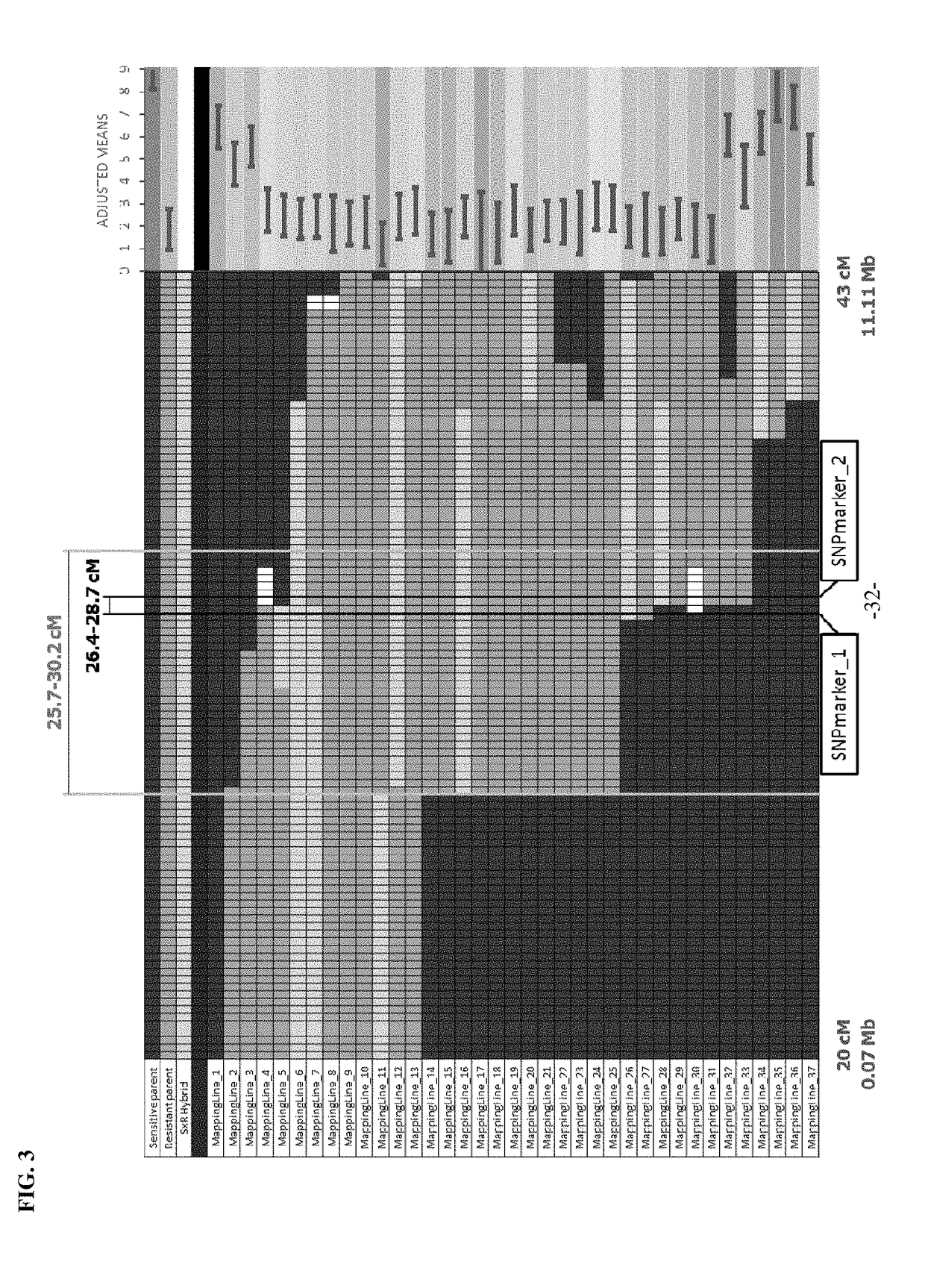Pepper plants with improved disease resistance
a technology of phytophthora capsici and plant, applied in the field of agriculture, can solve the problems of difficult identification or tracking of difficult to achieve, and inability to accurately identify or track desirable traits of plants, etc., and achieve the effect of improving phytophthora capsici resistance and phytophthora capsici resistan
- Summary
- Abstract
- Description
- Claims
- Application Information
AI Technical Summary
Benefits of technology
Problems solved by technology
Method used
Image
Examples
example 1
Identification of Immature Fruit Color Locus on Chromosome 5
[0071]The undesirable light green immature fruit color phenotype associated with the introgression of the P. capsici resistance locus on chromosome 5 from CM334 was first observed in an ancho hybrid comprising the introgression. Using earlier backcross generations from this conversion, the light green immature fruit color phenotype was found to be associated with a locus approximately 20 cM upstream of the P. capsici resistance locus on chromosome 5. The light green immature fruit color locus on chromosome 5 was later mapped and validated in an unrelated F3 population derived from a cross between the blocky line SBY-99-1160 and the ancho line HAP-114-1005. Fine mapping in a backcross population derived from a cross between CM334 and the ancho line HAP-114-1005 further refined the light green immature fruit color locus to a 3 cM region on chromosome 5 and subsequent SNP association within this region culminated in the develo...
example 2
Identification of P. capsici Resistance-Enhancing Locus on Chromosome 6
[0072]A doubled haploid (DH) population was generated to identify additional loci associated with P. capsici resistance. A DH population consisting of 181 lines was developed from the F1 progeny generated from the cross between the resistant hot pepper line HAS-144-6103 and the susceptible hot pepper line HAS-144-1357. Greenhouse assays were performed to evaluate symptom severity of lines under high disease pressure and low disease pressure. In one assay, disease pressure was determined by isolate concentration, wherein high disease pressure was induced by inoculating seedlings with a P. capsici isolate at a concentration of 1×106 / mL zoospores, whereas a concentration of 1×104 / mL zoospores of the same P. capsici isolate was used to induce low disease pressure. In another assay, high disease pressure was induced by inoculating seedlings with a more virulent P. capsici isolate. Seedlings were inoculated between the...
example 3
Development of Trait Linked Markers
[0074]Using the trait marker SNPmarker_7 and the trait marker SNPmarker_21, it was possible to break the linkage between the light green immature fruit color phenotype and P. capsici resistance. Through backcrossing and recombinant selection, a small (2 cM) efficacious introgression of the P. capsici resistance locus on chromosome 5 from CM334 was developed in a blocky pepper line. This recombination event is defined by markers SNPmarker_7 at 39.4 cM and by SNPmarker_12 at 41.8 cM. Markers that are capable of differentiating this breeding event from all other resistant P. capsici resistant lines have been developed and are shown in Table 1.
TABLE 1Marker status for P. capsici resistance donor (CM334)and P. capsici susceptible parent (SBR-99-1274), aswell as a resistant hybrid plant comprising the recombinantintrogression on chromosome 5 (SBRHJ12-G011).PositionSBR-SBRHJ12-Marker(cM)AllelesCM33499-1274G011SNPmarker_330.7952053G / TGGTTTTSNPmarker_434.97...
PUM
| Property | Measurement | Unit |
|---|---|---|
| resistance | aaaaa | aaaaa |
| pressures | aaaaa | aaaaa |
| disease resistance | aaaaa | aaaaa |
Abstract
Description
Claims
Application Information
 Login to View More
Login to View More - R&D
- Intellectual Property
- Life Sciences
- Materials
- Tech Scout
- Unparalleled Data Quality
- Higher Quality Content
- 60% Fewer Hallucinations
Browse by: Latest US Patents, China's latest patents, Technical Efficacy Thesaurus, Application Domain, Technology Topic, Popular Technical Reports.
© 2025 PatSnap. All rights reserved.Legal|Privacy policy|Modern Slavery Act Transparency Statement|Sitemap|About US| Contact US: help@patsnap.com



